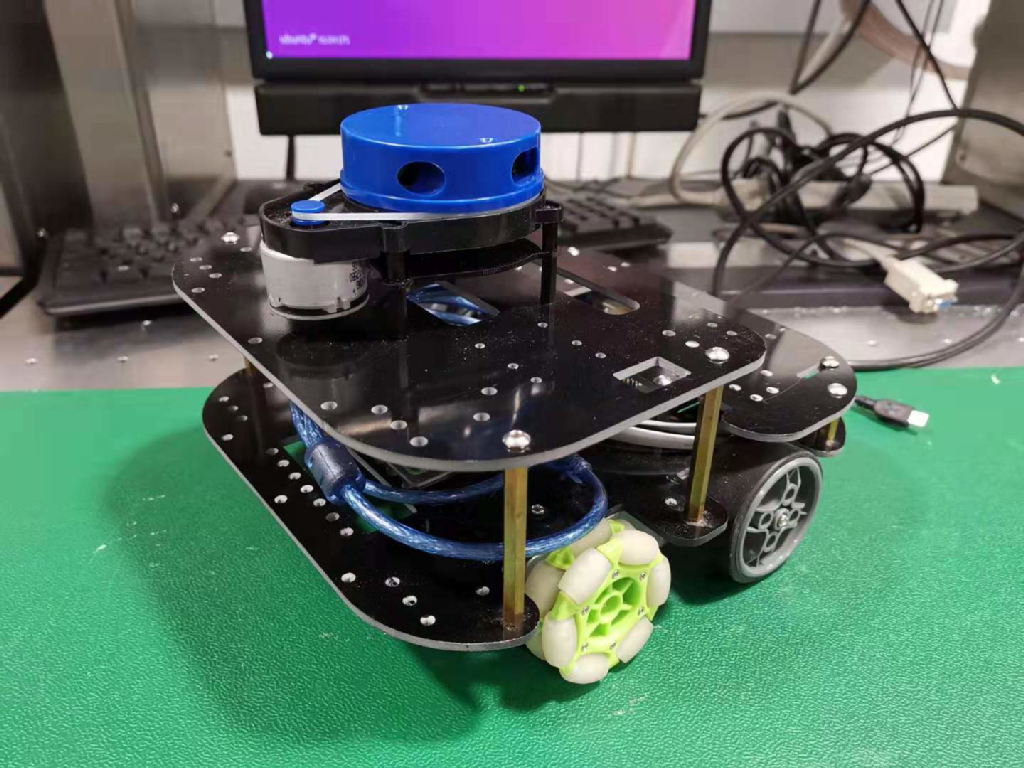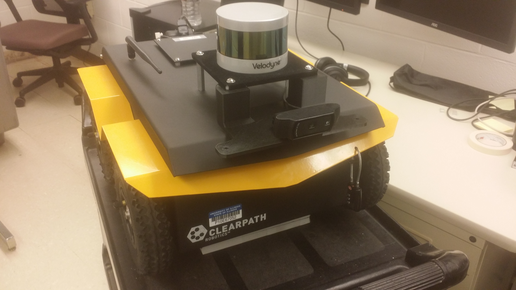Courses
Currently Professor Norris teaches two courses designed for senior undergraduate and graduate students
SE 498: Systems Engineering (Fall Semesters)
CRN: 70948(Undergrad), 70949(Grad)
This course in systems engineering examines the principles and process of creating effective systems to meet application demands. The concepts, problems, and methods of systems engineering are introduced in lectures and discussions and applied in assignments and through a semester-long group project.
Course Goals:
This course will examine the analysis, design, and systems issues of complex engineered
systems with particular attention to the parallel development of hardware and software.
By the end of this course students will be able to:
● Examine systems from many perspectives (such as software, hardware, product, etc.)
● Identify how the assumptions and constraints of each subsystem affect other subsystems
● Contrast systems engineering with software, electrical, and mechanical engineering
● Plan and manage the systems engineering process
● Identify the critical requirements imposed by applications including temporal and quality attributes
● Identify and evaluate analysis and design methods
● Identify, capture, model, and analyze system requirements
● Formulate system concepts (concept of operation)
● Architect a system
● Identify and state temporal issues associated with system performance
● Predict and assess the impact of usability issues in system operation
● Identify and resolve critical aspects of a system by prototyping
● Document designs at appropriate levels of detail
● Validate system requirements, concept, and design
● Assess risks and failure modes
● Distinguish critical functions, diagnose problems, and apply descoping strategies
● Conduct test and evaluation plans
● Judge the complexity of production and deployment issues
● Apply the entire systems engineering process from formulation though implementation
.
CRN: 70948(Undergrad), 70949(Grad)
This course in systems engineering examines the principles and process of creating effective systems to meet application demands. The concepts, problems, and methods of systems engineering are introduced in lectures and discussions and applied in assignments and through a semester-long group project.
Course Goals:
This course will examine the analysis, design, and systems issues of complex engineered
systems with particular attention to the parallel development of hardware and software.
By the end of this course students will be able to:
● Examine systems from many perspectives (such as software, hardware, product, etc.)
● Identify how the assumptions and constraints of each subsystem affect other subsystems
● Contrast systems engineering with software, electrical, and mechanical engineering
● Plan and manage the systems engineering process
● Identify the critical requirements imposed by applications including temporal and quality attributes
● Identify and evaluate analysis and design methods
● Identify, capture, model, and analyze system requirements
● Formulate system concepts (concept of operation)
● Architect a system
● Identify and state temporal issues associated with system performance
● Predict and assess the impact of usability issues in system operation
● Identify and resolve critical aspects of a system by prototyping
● Document designs at appropriate levels of detail
● Validate system requirements, concept, and design
● Assess risks and failure modes
● Distinguish critical functions, diagnose problems, and apply descoping strategies
● Conduct test and evaluation plans
● Judge the complexity of production and deployment issues
● Apply the entire systems engineering process from formulation though implementation
.
SE 498: Intro to Autonomous Vehicle Systems (Spring Semesters)
CRN: 68168(Undergrad), 68169(Grad)
This course introduces students to some of the concepts and techniques found in the world of Autonomous Systems. Students will apply the knowledge gained in the lecture in engaging lab sections ultimatley working with the Clearpath Jackal. Prospective lab members must take this course before joining the lab.
Course Description/ Overview:
This course will involve the introduction of autonomous vehicle technologies that serve as the foundation for development and operation. This will include the identification and development of autonomous system
subsystems, simulation methods and incorporate topics on algorithms for localization, dead reckoning, sensor fusion, perception, deep learning, planning/control, and payload development.
Objectives:
● Identify and list the common subsystems and technologies deployed in autonomous vehicles.
● Use the Matlab/Simulink toolsets to model autonomous systems
● Discuss the various types of sensors used within autonomous systems and describe suitable sensor fusion methods
● Describe the common methods used autonomous systems to perform Guidance, Navigation, Obstacle Detection and Control functions
Systems for Labs:
Lab Exercises:
0. Robot Operating System (ROS) and Simulink introduction lecture (1 wk)
1. ROS intro II with skid steer robot and control implementation on Turtlebot sim (1 wk)
2. Obstacle avoidance and wall following using infrared sensor and collision sensor (2 wk)
3. Collecting and interpreting LIDAR data from GEM autonomous vehicle (2 wk)
4. Lane detection and following using Raspberry Pi 3 camera module (2 wk)
5. Final competition to implement control and localization on Jackal and compete to see who can most closely follow a provided path
Homework:
0. An introduction to model generation in Simulink and system identification (2 wk)
1. Developing kinematic and dynamic models in Simulink for skid steer and Ackerman steer vehicles using their equations of motion (2 wk)
2. Modeling Jackal dynamics using Simulink and Spatial V2 forward dynamics package (2 wk)
3. Designing control systems to control the previously designed models (2 wk)
4. Using Simulink’s ROS interface and the controllers developed in the previous week to control a Jackal simulation in Gazebo (2 wk)
5. Designing a Kalman Filter using Matlab/Simulink to filter multiple pieces of localization data together (2 wk)
6. Using neural networks to perform image classification (2 wk)
CRN: 68168(Undergrad), 68169(Grad)
This course introduces students to some of the concepts and techniques found in the world of Autonomous Systems. Students will apply the knowledge gained in the lecture in engaging lab sections ultimatley working with the Clearpath Jackal. Prospective lab members must take this course before joining the lab.
Course Description/ Overview:
This course will involve the introduction of autonomous vehicle technologies that serve as the foundation for development and operation. This will include the identification and development of autonomous system
subsystems, simulation methods and incorporate topics on algorithms for localization, dead reckoning, sensor fusion, perception, deep learning, planning/control, and payload development.
Objectives:
● Identify and list the common subsystems and technologies deployed in autonomous vehicles.
● Use the Matlab/Simulink toolsets to model autonomous systems
● Discuss the various types of sensors used within autonomous systems and describe suitable sensor fusion methods
● Describe the common methods used autonomous systems to perform Guidance, Navigation, Obstacle Detection and Control functions
Systems for Labs:
Lab Exercises:
0. Robot Operating System (ROS) and Simulink introduction lecture (1 wk)
1. ROS intro II with skid steer robot and control implementation on Turtlebot sim (1 wk)
2. Obstacle avoidance and wall following using infrared sensor and collision sensor (2 wk)
3. Collecting and interpreting LIDAR data from GEM autonomous vehicle (2 wk)
4. Lane detection and following using Raspberry Pi 3 camera module (2 wk)
5. Final competition to implement control and localization on Jackal and compete to see who can most closely follow a provided path
Homework:
0. An introduction to model generation in Simulink and system identification (2 wk)
1. Developing kinematic and dynamic models in Simulink for skid steer and Ackerman steer vehicles using their equations of motion (2 wk)
2. Modeling Jackal dynamics using Simulink and Spatial V2 forward dynamics package (2 wk)
3. Designing control systems to control the previously designed models (2 wk)
4. Using Simulink’s ROS interface and the controllers developed in the previous week to control a Jackal simulation in Gazebo (2 wk)
5. Designing a Kalman Filter using Matlab/Simulink to filter multiple pieces of localization data together (2 wk)
6. Using neural networks to perform image classification (2 wk)
Contact AUVSL
Professor William R. (Bob) Norris
Department of Industrial and Enterprise Systems Engineering
University of Illinois at Urbana-Champaign
210B Transportation Building
104 S. Mathews Ave.
Urbana, IL 61801-3080
(217) 300-6647
Email: wrnorris@Illinois.edu
Professor William R. (Bob) Norris
Department of Industrial and Enterprise Systems Engineering
University of Illinois at Urbana-Champaign
210B Transportation Building
104 S. Mathews Ave.
Urbana, IL 61801-3080
(217) 300-6647
Email: wrnorris@Illinois.edu
Copyright © Autonomous Unmanned Systems Laboratory 2022


